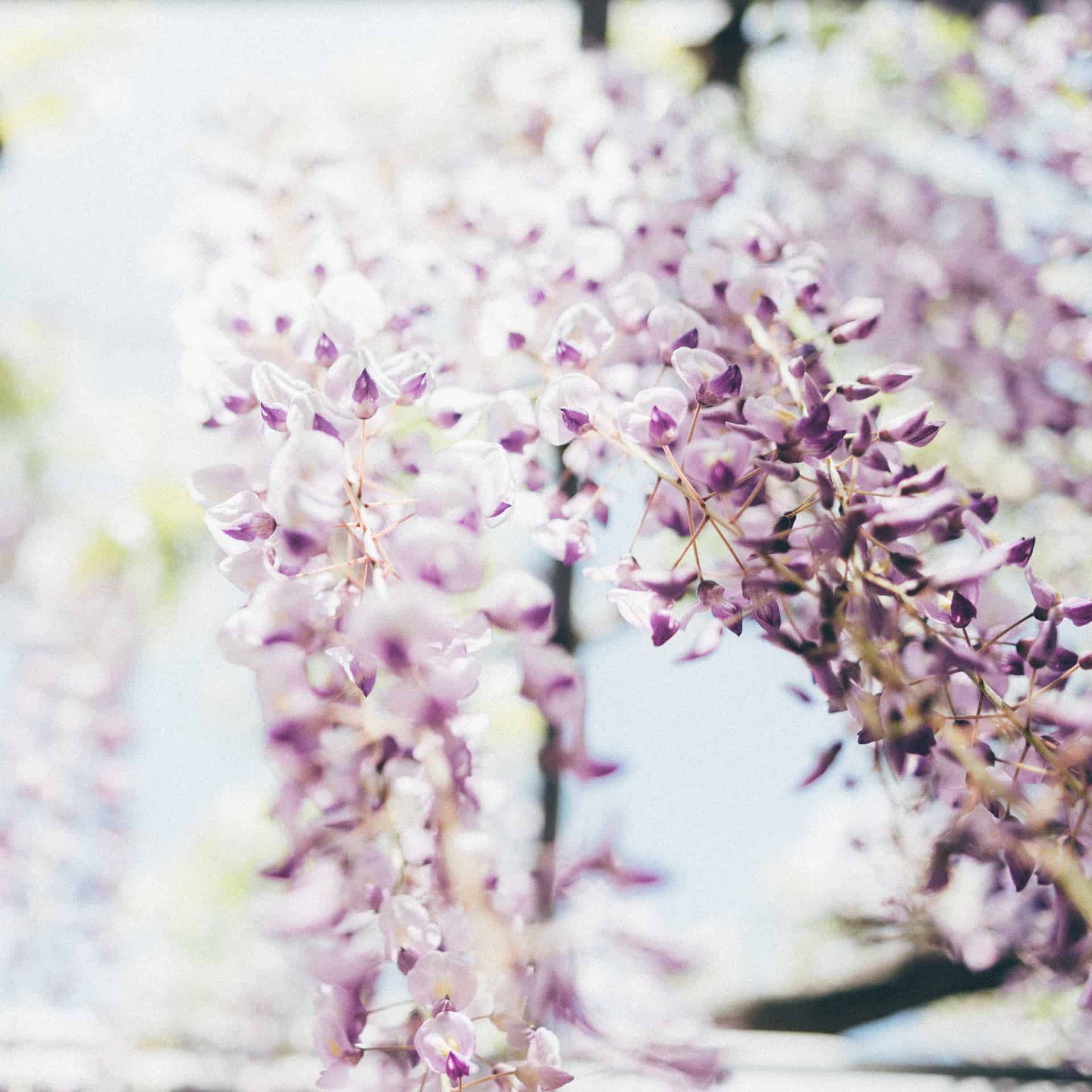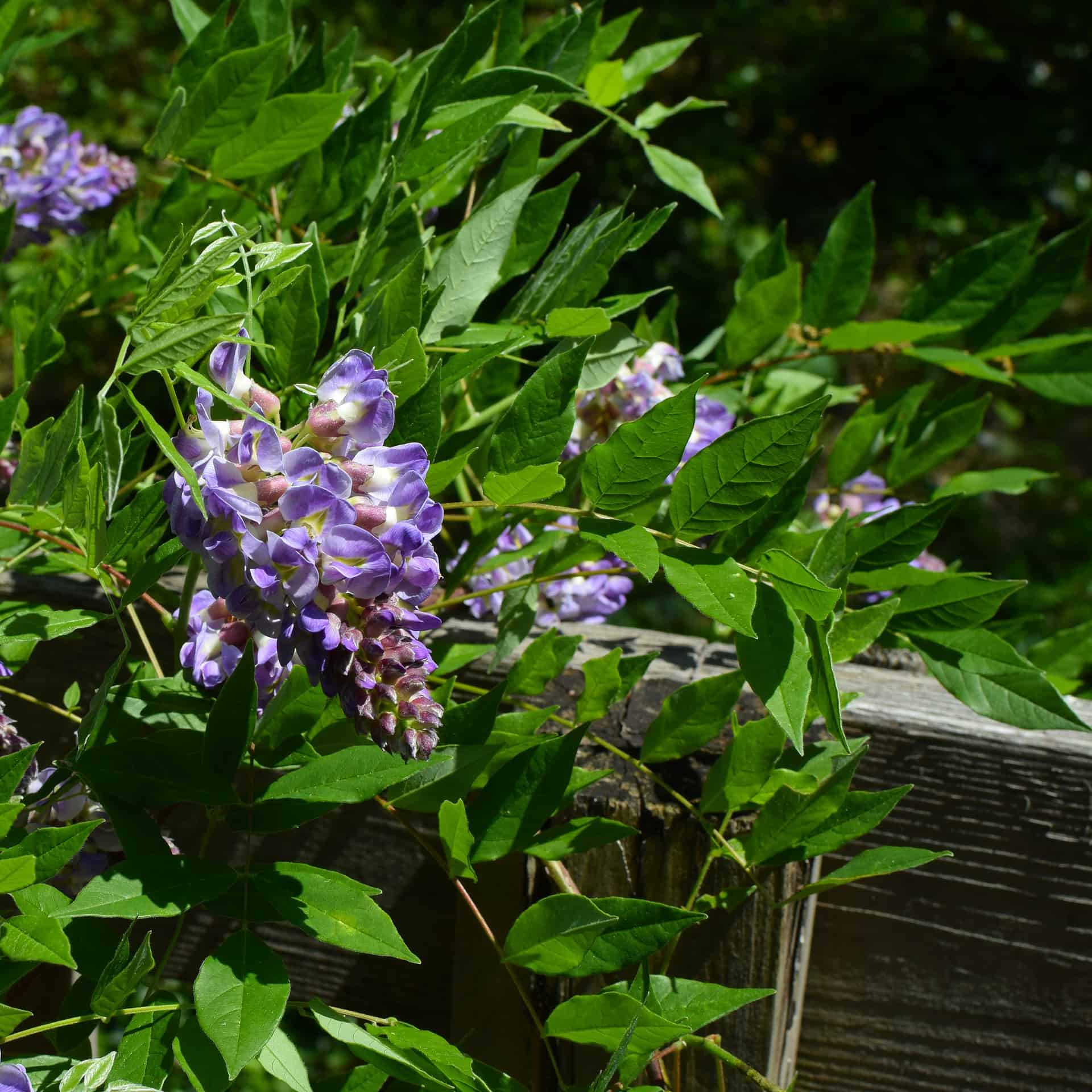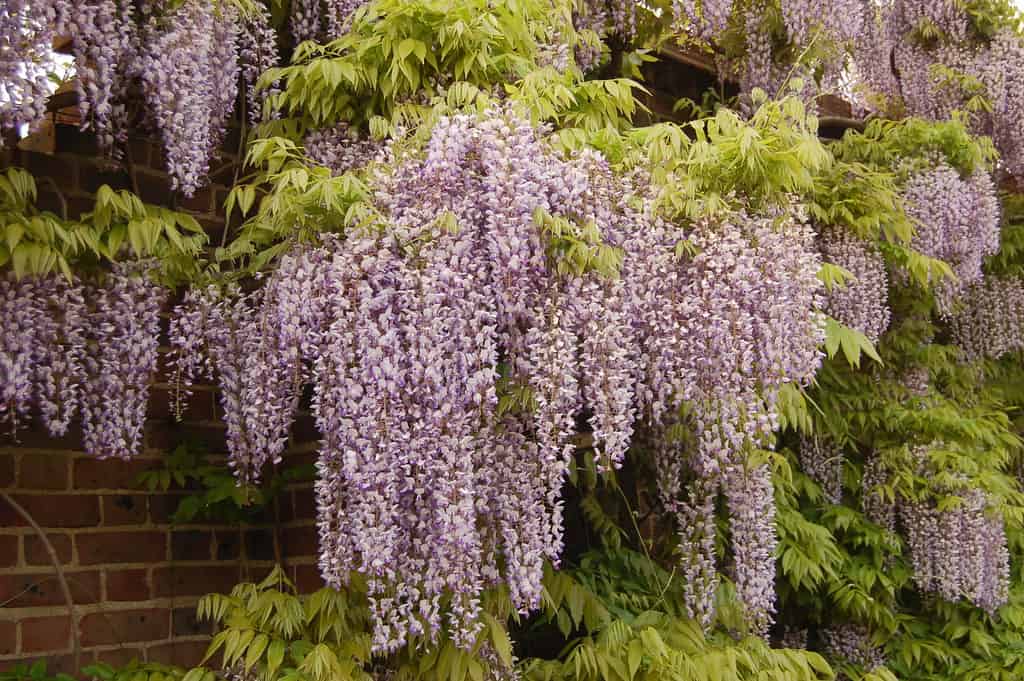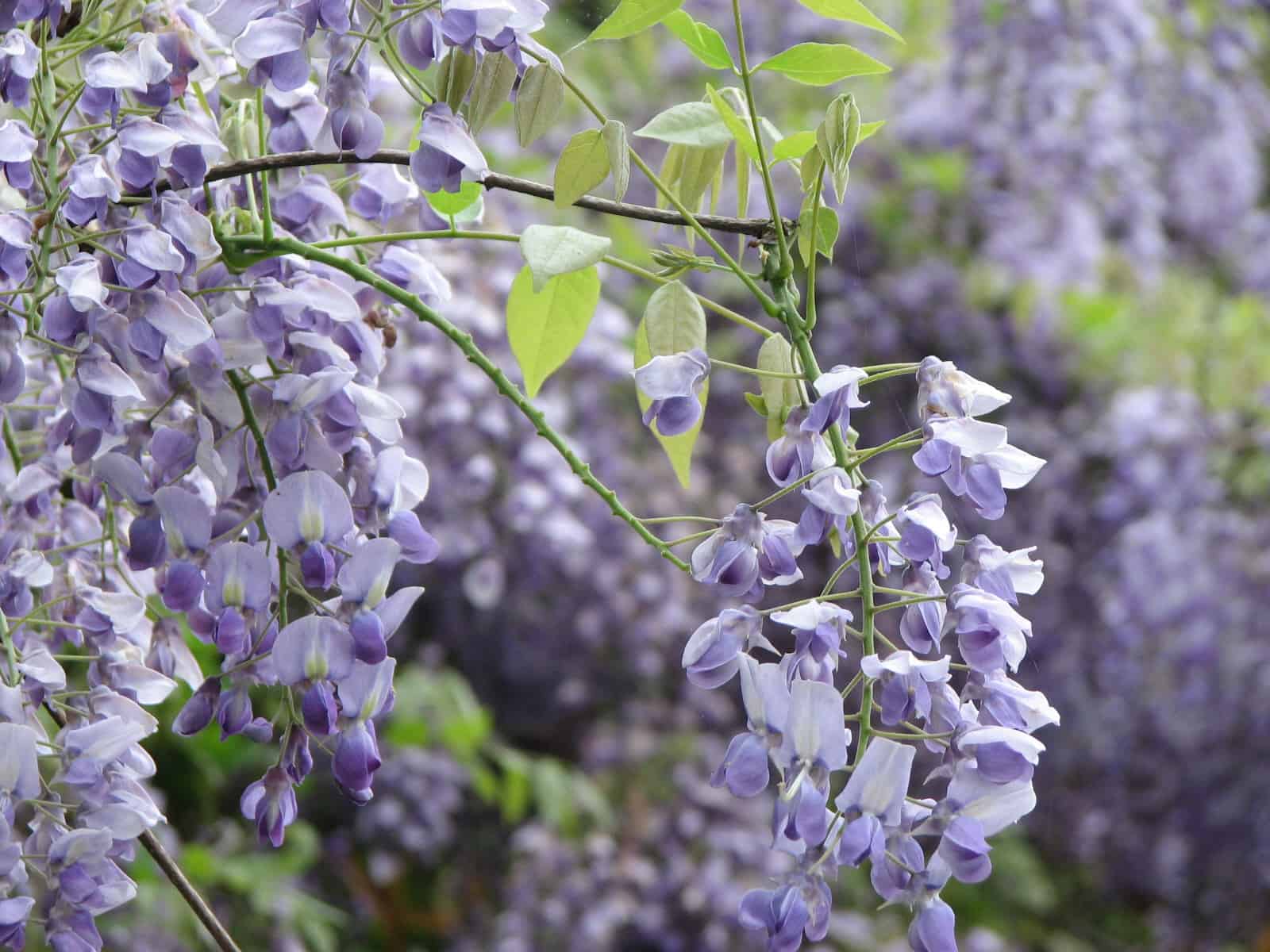No products in the cart.
Do you want a flowering vine that will add interest to your garden in spring to rebloom in summer again? Then you have come to the right place. We present you with the Blue Moon Wisteria vine.
You will be the envy of the road as yours will brighten up the landscape twice. The vine has large blue fragrant blooms covering a trellis or fence all season long. It attracts pollinators like butterflies to bees, and it grows fast.
Plant Name: Wisteria macrostachya ‘Blue Moon,’
Other Name: Blue Moon Wisteria
Plant Type: Climbing Vine
Native Areas: Southcentral United States
Light Requirement: Full Sunlight
Watering: Water when the soil dry
Fertilizer: Phosphorus Rich Fertilizer
Toxicity: All parts are toxic to humans and animals
Temperature: Hardy down to -30°F
Propagation: Stem Cutting
Growth: 25 feet tall with a mature width of 8 feet
Soil Type: Well-Drained Soil
USDA Hardiness Zones: 4-9
More About Blue Moon Wisteria
The Blue Moon Wisteria is also known as Wisteria macrostachya blue moon or Kentucky Wisteria. It is a trailing vine with stunning lavender blue flowers and very cold hardy. The deciduous vine you find native to swampy regions in the southern USA.
It fits in well with the home landscape along a trellis or trees. The growth rate is fast and looks fabulous at a pergola. The Wisteria belongs to the Fabaceae or legume family. The best part is the Blue Moon is a less aggressive type.
Still, it can reach a lot of height, up to 25 feet, and the flower buds appear similar to the Wisteria frutescens or American Wisteria. The cultivar became a project of Harvey and Brigitte Buchite, living in Hidden Springs Flower Farm in Spring Grove, Minnesota.
So, if you live in cold regions, invest in this Wisteria to brighten your garden for the best flowering ever.
Blue Moon Wisteria Care Guide

The Blue Moon Wisteria vine provides you with springtime and summer blooms in lavender blue. Bean-like pods follow the flowers in the fall with an odd pinnate leaf form. Hence, it helps to choose a secure spot in an open site away from vulnerable structure foundations.
Then provide a support structure to support your full-grown Blue Moon vine after a few years. Then plant your young vine in a planting hole not deeper than the soil in the pot. Keep the hole about two times wider than your nursery pot.
Planting Wisteria Macrostachya Blue Moon
When it comes to planting Blue Moon Wisteria in the garden, it helps to do a few things:
We recommend choosing a site with open space in full sun with ample air circulation, allowing the roots to spread away from vulnerable structure foundations. Provide some afternoon shade if you live in warmer climates down to the growing zone 8.
You can provide a small trellis for now, followed by a more supportive structure for your full-grown Wisteria vines.
Immediately after planting, Blue Moon Wisteria provides it with good soil moisture for up to a year.
Then add some organic mulch to help retain moisture as it helps stabilize the overall moisture levels.
Next, you can remove any dead, damaged, or dying stems after growing your plant for a while. Always leave the strongest shoots to train.
Also, remember to tie stems to the support when starting your training, as the Wisteria macrostachya tends to twist counterclockwise around each other.
When the last happens, the deep green leaves become clad with an odd pinnate and twisted trunk-like form.
How Long Does It Take For Your Blue Moon Wisteria Vine to Bloom?
The Kentucky Wisteria can take up to three years before it blooms. But well-supported plants you grow in full sun can start blooming earlier as two years after you plant them. So, ensure your Blue Moon gets at least six hours of direct sunlight daily.
Also, ensure that your Blue Moon Wisteria vine has enough air circulation and space to grow. It helps to keep the soil moist yet well-watered during the growing season. Finally, add some top dress with organic compost around the root ball each spring.

For fertilizing, it helps to provide your plant with a phosphate-rich fertilizer in early spring for those gorgeous Blue Moon Wisteria blooms. Furthermore, try not to prune your young plants too much after you plant them.
Another helpful thing is to deadhead the blooms to help develop late summer buds. Even an early summer prune encourages the development of new flowers in late summer. The Blue Moon Wisteria is hardy down to -30°F and can often bloom throughout the year but provide them with full sun.
One thing is for sure the Blue Moon Wisteria vine makes for a statement in the garden with its naturally twining to form in any direction you want.
Pruning Blue Moon Wisteria Vines

When considering pruning your Blue Moon Wisteria vine, it helps to remove any dying, diseased, or dead stems before planting young vines. Also, remove the weak shoots to leave two strong ones to start with training along a trellis.
For established Blue Moon vines, you can do pruning in spring when the flowers fade. While in early summer, it can help with reblooming. You can prune in winter, but it might reduce the flowering.
Start by removing any stems to foliage you see as damaged, dying, or diseased.
Then remove those tangled stems growing in the wrong direction.
Also, thin out those crowded stems, allowing more light and air circulation.
If you want to, you can cut the stem back to the ground allowing for new growth.
You can do pruning by pinching out tips on the side shoots a few times during the growing season.
You can trim monthly by cutting side shoots or up to two or three buds.
Furthermore, you can shorten the side shoots to about six inches every two weeks in summer.
Propagating Blue Moon Wisteria Vines
While you can grow Blue Moon Wisteria from seeds, another great way is to take cuttings. So, you can take your healthy leftover cuttings when pruning your vine.
Start by taking softwood cuttings meaning the wood still needs to be green and have no bark.
Take a cutting of up to six inches long with two sets of leaves on it. The best time to do this is in late spring or at the start of summer.
Remove the lower sets of leaves, leaving the top ones in place. Then trim the lowest node where you remove the leaves at least 1/2 inch from the bottom. Also, remove the flower buds.
Prepare a pot with well-drained soil moistened and dip the cut end into the rooting hormone.
Use your finger or a stick to make a planting hole and place the cut end into the hole.
Press the soil around the stem and moisten it again.
Leave the container in bright indirect sunlight until you notice root development with new growth. Then grow it to reach a good height before transplanting it into the garden.
Wisteria Varieties
The Wisteria is a long-lived flowering vine, and the stems twine counterclockwise, developing foot-long racemes making a statement in the garden. The Blue Moon Wisteria is one spectacular vine, but there are many other outdoor plants in the genus you can also grow depending on where you live.
Japanese Wisteria
 Wisteria floribunda @flickr
Wisteria floribunda @flickr
The Wisteria floribunda, known as the Japanese Wisteria, is suitable to grow in the growing zones 4-9. Compared to the Blue Moon, it can reach up to 30 feet high and has a flowering period between mid-spring to early summer.
The flowers are called racemes with a chain-like cluster form and are heavily scented. It is a suitable cultivar for the northern climates and presents a great color variety, and you can train them to grow horizontally.
Chinese Wisteria

Wisteria sinensis, or the Chinese Wisteria, grows well in zones 5-8, reaching up to 25 feet tall. The flowering period is early spring to summer, but it has shorter flower clusters and is not as cold-hardy as the Japanese or Blue Moon cousin. The flowers open at once, even before any foliage appears.
You can train the vine to grow horizontally and reaches a mature height of 25 feet.
Silky Wisteria

Wisteria brachybotrys, or the Silky Wisteria, can grow in zone 5-8, reaching a mature height of 25 feet. You see the best blooms in late spring to summer with six-inch long flower clusters in white or purple color while the foliage has silky hairs.
Blue Moon Wisteria Common Diseases and Pests
Some concerns with Blue Moon Wisteria are fungal diseases like powdery mildew and leaf spot, but these are not significant. It starts with yellow spots on the foliage, but powdery mildew will develop into fuzzy white coatings.
So, removing all the damaged foliage is best, and trim your indoor plants for more airflow. For the overall development of the above, you can spray neem oil after you thin out the plants. The other problem is root and crown rot resulting from overwatering and overhead watering.
You can remove the vines to healthy ones, as there is no treatment, and allow the soil to dry completely before watering again.
Frequently Asked Questions
You can grow the Blue Moon Wisteria in pots, but it will need soil with good drainage and regular feeding. So choose a good-sized pot for your plant with enough space to grow and provide your plant with enough air circulation.
When looking at the growth rate of the Blue Moon Wisteria, it can take up to two years to establish.
The blooms of the Blue Moon Wisteria have one of the most aromatic fragrances of all Wisterias.
We do not recommend growing your Wisteria on the house, as it can tear down fences and walls to even a pergola with a vigorous root system. The best is to plant them away from structures providing them with a secure trellis to move along.
If you want a plant with beautiful flowers that can survive winters all year, then the Blue Moon Wisteria is a winner. The good news is that Plantly has a collection of Wisteria plants you can buy.
Whether you want to buy, sell, or simply reach out to other plant enthusiasts, Plantly is the right place to be!


